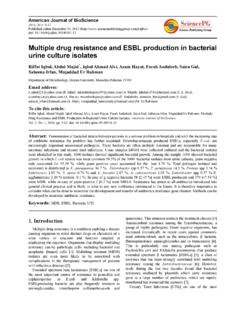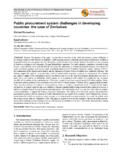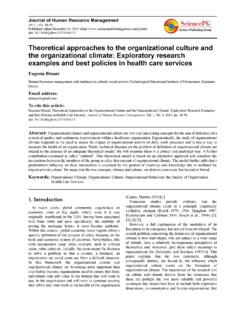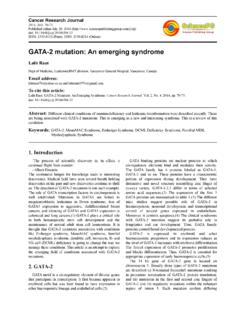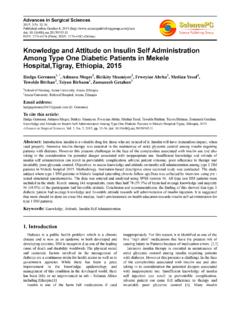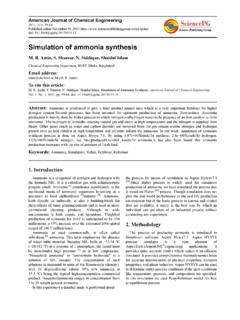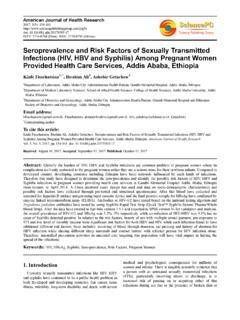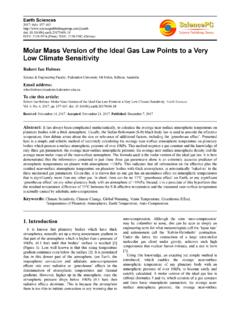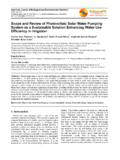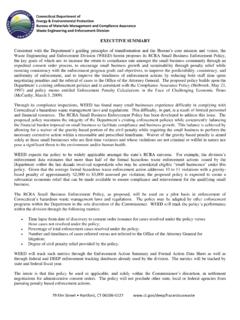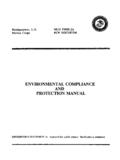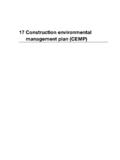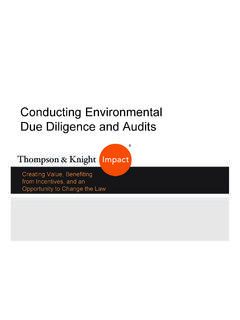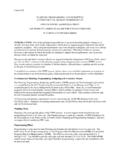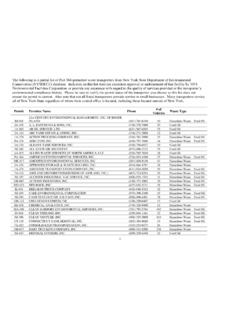Transcription of Environmental Management Compliance, Law and …
1 International Journal of Environmental Protection and Policy 2015; 3(4): 79-87 Published online June 17, 2015 ( ) doi: ISSN: 2330-7528 (Print); ISSN: 2330-7536 (Online) Environmental Management compliance , law and Policy Regimes in Developing Countries: A Review of the Zambian Case Cuthbert Casey Makondo1, *, Sydney Sichilima1, Matthews Silondwa1, Richard Sikazwe1, Lombe Maiba1, Chawezi Longwe1, Yvonne Chiliboyi2 1 Environmental Engineering Department, Copperbelt University, Kitwe, Zambia 2 Institute for Water Research, Rhodes University, Grahamstown, Republic of South Africa Email address: (C. C. Makondo), (S. Sichilima), (M. Silondwa), (L. Maiba), (R.)
2 Sikazwe), (C. Longwe), (Y. Chiliboyi) To cite this article: Cuthbert Casey Makondo, Sydney Sichilima, Matthews Silondwa, Richard Sikazwe, Lombe Maiba, Chawezi Longwe, Yvonne Chiliboyi. Environmental Management compliance , law and Policy Regimes in Developing Countries: A Review of the Zambian Case. International Journal of Environmental Protection and Policy. Vol. 3, No. 4, 2015, pp. 79-87. doi: Abstract: This paper is a review of Environmental Management compliance of the extractive industry; particularly mining in Zambia and the government s commitment to Environmental protection in view of sustainable development .The main objective of this work was to review industrial compliance against Zambia s Environmental legal regime for the period between 2009 and 2014, track Environmental policy development, its implementation within the institutional functional framework in view of precautionary principle, polluter pays principle and sustainability.
3 The authors concluded that while the Environmental legal framework may be considered relatively new compared to developed nations like United Kingdom, it dates back to the 1970s and is comparable in terms of strength, to that of developed nations. However, there are many challenges regarding effective implementation. Thus, although there are many stiffer and tougher regulations enacted in Zambia (to a point where some advocates of neo-classical frontiers economics have criticized Zambia as slowly introducing one-more among the most highly regulated Environmental sectors in the world, deterring development) the authors concluded that implementation was a huge challenge: implementation of Zambia s Environmental regulatory regime faces wide range of problems, from a highly centralized financial and decision-making system and budgetary allocation of negligible size, to lack of appropriate tools, equipment and personnel technical capacity.
4 It was found that while the Environmental regulations have been further stiffened around 2011-2013; compliance of mining companies was lagging behind. This was evidenced by failure of 8 in 10 mining firms to submit periodic reports as per regulatory conditions on their permits. Cases of discharging and disposing of hazardous waste to gain savings from the expenses that would otherwise arise through normal disposal procedures still exist. The authors concluded that while new and stronger measures have been put in place by government to ensure that the Environmental degradation caused by mining and other extractive industry activities are adequately managed, the measures are not working effectively.
5 These findings are consistent with the findings of the 2014 Auditor General s Report. It was clear that co-ordination within the government s regulatory institutional framework with interacting mandates was weak, while the selective nature on the application of the Environmental Impact Assessment (EIA) regulations was demeaning Environmental protection and socio-economic justice. Keywords: Extractive Industry, Triple-Bottom-Line, Sustainability, Environmental Management , compliance , law and Policy 1. Introduction In developing countries where economic development is driven mostly by the extractive industry, terms such as Environmental Management and sustainability and triple-bottom-line are relatively new concepts [1, 2].
6 In these nations, economic growth concerns have tended to override Environmental sustainability considerations [2, 3, 4]. However, with an increased global concern following 80 Cuthbert Casey Makondo et al.: Environmental Management compliance , law and Policy Regimes in Developing Countries: A Review of the Zambian Case Rio-1992 (the first Earth Summit on Environment and Development) issues of sustainable development (the idea that development is threefold, encompassing- Environmental , social and economic balance or triple-bottom-line) have gained understanding in resource Management practices [4]. With a rapid growth of the third-sector organizations in the 1990s demanding Environmental justice and green growth from governments through tough industrial regulation, stringent Environmental regulatory regimes and reorganizations of institutional framework arrangements became inevitable in most nations.
7 In Africa however, existing Environmental regulatory regimes have been cited as weak in many studies [1, 3]. And because of this perception, some multinationals operating in the extractive industry have been forced by International Financing Corporations (IFC; , Citi-group and World Bank) to implement initiatives considered good practice such as equator principles when implementing IFC financed projects costing over US$4m [5]. However, equator principles have had their weaknesses which are not part of this paper. After agriculture, mining in Zambia is probably the second oldest extractive industry. It has taken place for centuries; starting with rudimental activities recorded in 1880s to relatively larger scale artisanry 48 years later in 1902 around Kabwe-kamukuba, and then to the first commercialized operation of 1928.
8 Mining has undeniably played a central role in Zambia s socio-economic development across all political regimes, albeit its associated Environmental effects [6]. The mining of copper particularly, has been the most significant mineral resource with ubiquitous deposits in two main areas of the country, namely; Copperbelt and North-western Provinces. Other mining projects include coal, uranium and nickel in Southern Province and gemstones in many parts of the country. The sector has gone through three main phases of ownership: first, private ownership under a colonial administration prior to political independence in 1964, then national ownership post-independence in 1971under the Kaunda government, until the re-privatization of the 1990s under the Chiluba government [6].
9 During mines privatization in 1990s, with the demands of due-diligent audits, the burden of Environmental liabilities was shouldered squarely by the government before new mine owners formalized acquisitions of mine facilities across Copperbelt. With the help of the World Bank, and Nordic Development Fund, the Zambian government initiated the Copperbelt Environment Project (CEP) worth about US$62M, to address all former mining liabilities in the Country. By 2003, CEP was launched to address among others, strengthening the regulatory capacity of ECZ and Mine Safety Department (MSD). One of the most successive stories of CEP was the acquisition of various Environmental monitoring equipments; and the creation of an Environmental Protection Fund (EPF) to ease future rehabilitation funding mechanisms by operationalizing Environmental rehabilitation in view of polluter pays principle.
10 Under this fund, mining liabilities of current and future operations would be addressed using these pool funds. Consequently, all mining firms were required to contribute certain amount of money annually commensurate to their foreseeable Environmental liabilities. EPF is still operational today, albeit difficulties in costing Environmental liabilities of ongoing mining activities. While the positive side of mining has been greatly felt and more often openly discussed, the negative legacy; a much dark side of mining had remained secret and only known to few medical doctors and environmentalists. Thanks to the growth of the third sector organizations such as non-governmental organizations and investigative journalism: it is now public knowledge and clearly understood by many that mining in Zambia have had serious negative legacies.
